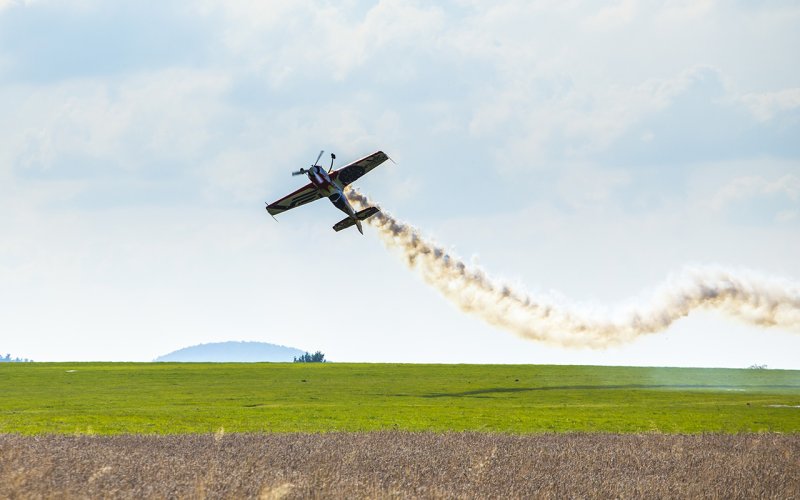How is it possible for an airplane to fly horizontally during aerobatics, even when it is upside down? The lift on the wings should pull him down and not up…
It is true that the plane takes off due to the geometry of the wings. The upper part is more bulging than the lower part and therefore the air flows at a higher speed around the upper part of the wing than the lower part. And it follows from Bernoulli’s equation that the higher the velocity of the fluid, the lower the pressure at a given location. However, if that were the case, the plane could only climb. We regulate the flow speed by controlling the propeller — the faster the plane flies, the faster the flow. So it would be possible to regulate the height of the aircraft by regulating its speed. But it’s not perfect. Therefore, aircrafts have rudders (at the rear of the aircraft). Turning the elevator changes the direction of the aircraft relative to the surroundings. You can try something similar when you put your hand out of a moving car — if you have your palm horizontal with the road, you won’t feel anything interesting but when you turn it, your hand will either drop or rise — depending on whether the palm is down or up. The same works for the aircraft — by turning the elevator, the air on the rear of the aircraft will either turn upwards or downwards. So this is the second force acting on the aircraft after lift. We have omitted the most basic force — the force that the propeller pushes the plane forward.
By combining these 3 forces, it is possible to control the aircraft in standard flight as well as in flight upwards — only transport aircraft are not designed for this, in contrast to aerobatic aircraft.
Want to ask something?
Send us an e-mail with the subject “Physics mysteries” to the address:
We can't wait to tackle your interesting questions!





